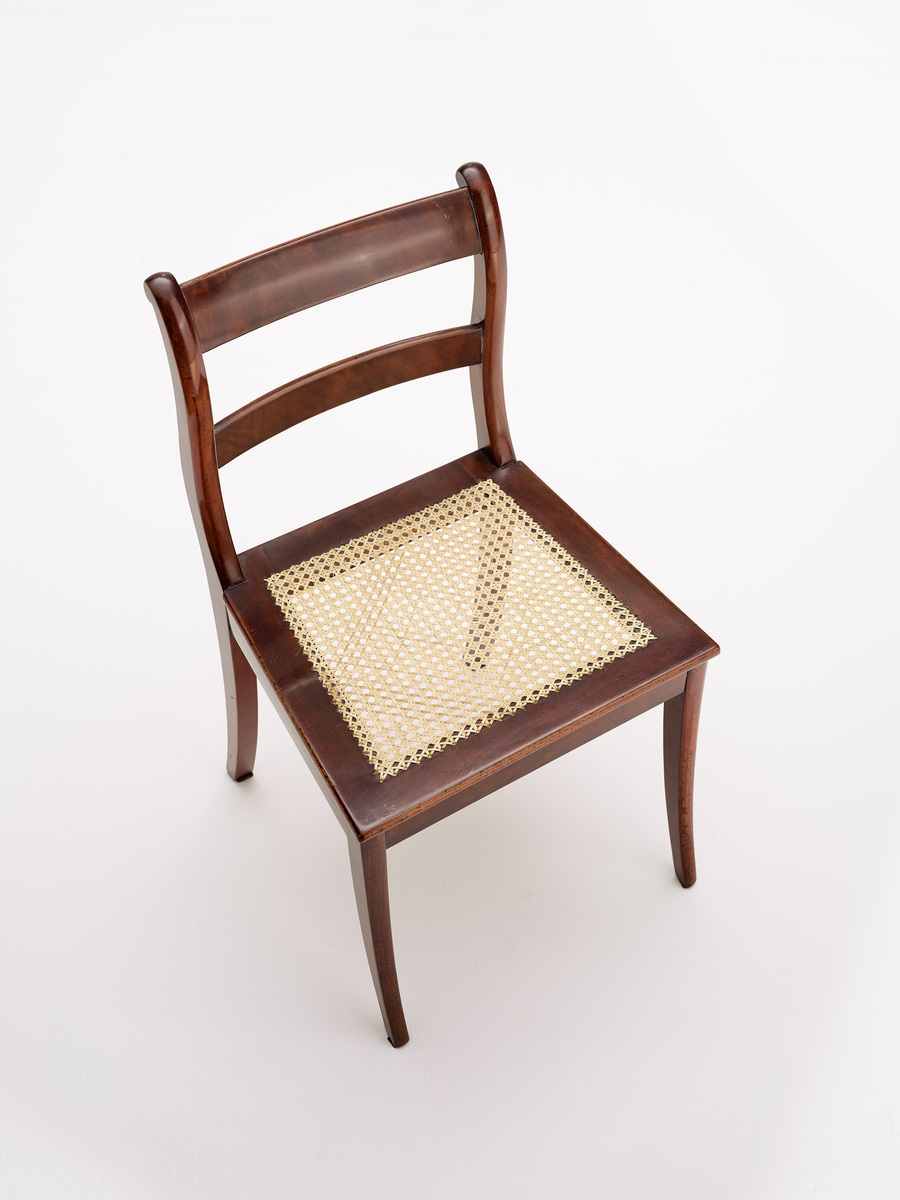Source

Source: Deutsches Historisches Museum, Inv.-Nr. KG 2016/6
This simple but elegant chair was designed for the Berlin City Palace of the Hohenzollern kings during the reign of Friedrich Wilhelm III. It was designed by architect Karl Friedrich Schinkel (1781–1841) and built by furniture maker, Karl Wanschaff (1775–1848). Schinkel was most famous for his transformation of the Berlin cityscape in neoclassical style, but as a polymathic talent he was also noted for his interior decorations and furnishings, which he designed to harmonize with the buildings he helped construct. Schinkel thus helped spread what came to be called the Biedermeier style, which derived from classicist styles and aimed to appeal to middle-class desires for simpler and less obviously luxurious household goods. Though spare and simple, the chair that Schinkel designed for his royal patron was luxurious in its rich mahogany wood, elegantly turned legs and back, and carefully woven cane reed seat. After a period of relative unpopularity, the linearity and simplicity of Biedermeier styles served as inspiration for modern art and furniture design in the early twentieth century.

Source: Deutsches Historisches Museum, Inv.-Nr. KG 2016/6
© Deutsches Historisches Museum, Berlin